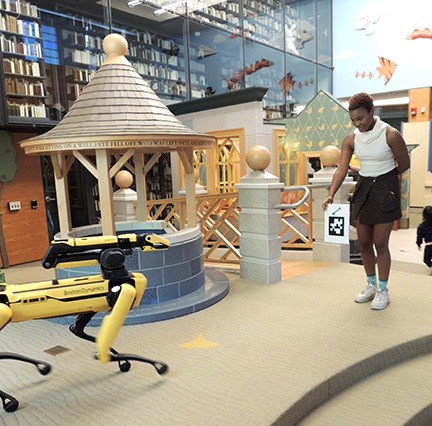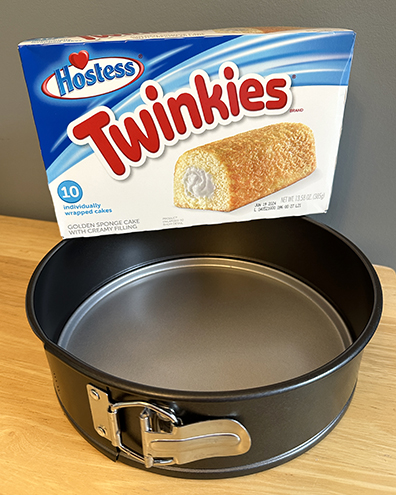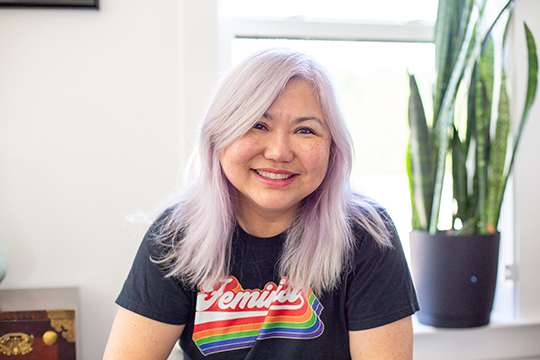
See SPOT walk, see SPOT climb, see SPOT dance! This spring, we had the opportunity to host a very unusual guest at story time!
Meet SPOT, a four-legged robot created by Boston Dynamics. He lives on Princeton University campus and is part of a course titled “Robots in Human Ecology: A Hands-on Course for Anthropologists, Engineers, and Policymakers.” SPOT arrived with an amazing team of undergraduate handlers, plus plenty of plush toys to share.

Vivian Chen, Marisa Hirschfield, Aaron Serianni, Vasumathi Venkat, Zoe Rhodes
We started the program reading Boy + Bot, written by Ame Dyckman and illustrated by Dan Yaccarino (Knopf Books, 2012). The story is about the playful interactions between a boy and a robot, which fit perfectly with SPOT’s dynamic nature. After the book concluded, we had a short, 10 minute design activity in which young future engineers drew their own personal robots, and earned a paw print approval sticker from Team SPOT:
Then it was time for the big show as SPOT entered the gallery!
The students did a fantastic job putting together a demo, answering endless questions from the audience, and just being enthusiastic about sharing what they study. One of my favorite parts was when they demonstrated how SPOT can be programmed to read and follow fiducials, which are basically QR codes representing numbers. SPOT scans the code, finds the number, and then completes a pre-programmed action associated with the number (like moving forward, turning, or extending his arm).

I asked Zoe Rhodes (seen above) what was the best lesson she learned from SPOT this semester. She replied:
“I would say the best lesson I learned from working with SPOT is the importance of making mistakes. We love it when things work out but most of the time we’re dealing with mistakes. But as I’ve worked with SPOT I’ve realized that these mistakes teach us so much more about ourselves and our capabilities than when things go correctly. It sounds a little cliche to say we learn from our mistakes but that’s really what robotics (and most things in life) are about. SPOT may fall down but we pick him right up and try again. In my opinion this makes the end product so much more fulfilling and exciting.”
I posed the same question to Vivian Chen, who added:
“The best lesson I learned from working with SPOT is patience goes a long way when working with robots and new technology!”
It was a truly magical story time, THANK YOU so much to the students and to professors Alexander Glaser and Ryo Morimoto for putting together such a tremendous program!






 Just posted! An interview with award-winning author
Just posted! An interview with award-winning author